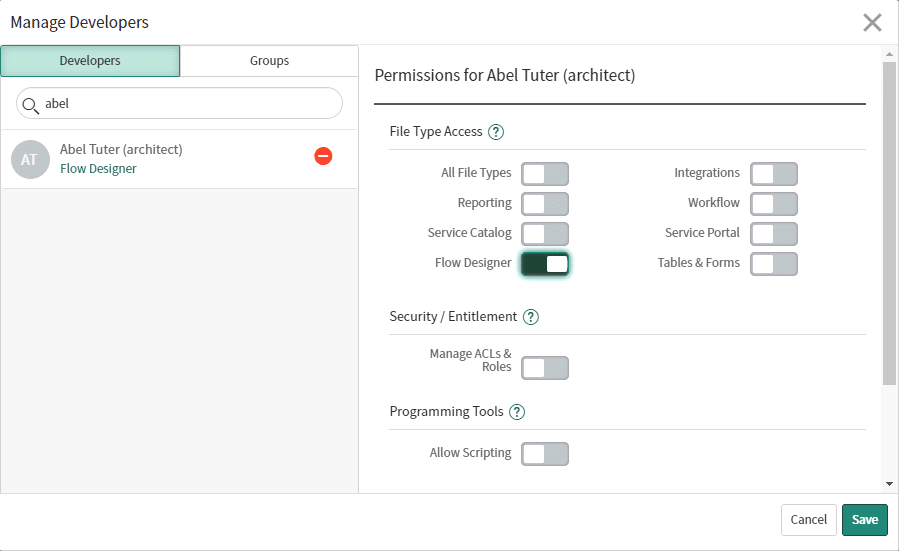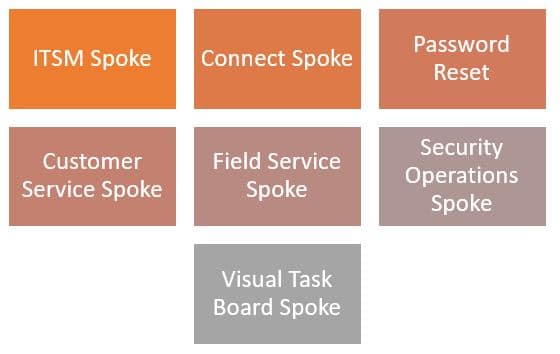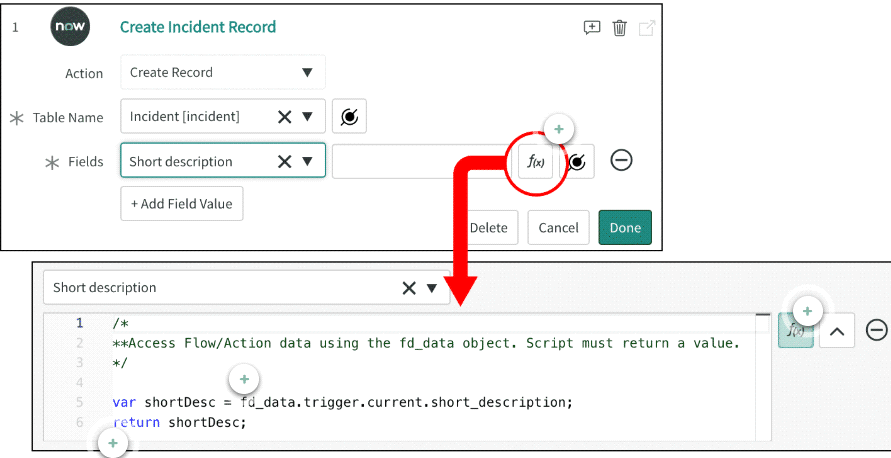ServiceNow Flow Designer Makes It Easy to Automate Workflows
Flow Designer is a ServiceNow feature that helps automate business processes in a single design environment without the need for any complex code. Flow designer has an automated sequence of actions that run each trigger whenever conditions are met. The ServiceNow Flow Designer uses natural language to automate approvals, tasks, notifications, and record operations and configure automation. Here’s how ServiceNow Flow Designer simplifies the business automation process.
Benefits of ServiceNow Flow Designer with Integration Hub
- Automates integration tasks by using ServiceNow built components for Flow Designer or custom integrations
- Extends Flow Designer content to integrate business processes with external systems
- Promotes business process automation by enabling developers to develop and share spokes with Flow Designers
- Reduces costs involved with the ServiceNow platform replacing complex custom scripts
- Provides natural language descriptions of integration logic to help non-technical users understand triggers, actions, inputs, and outputs
How to Access ServiceNow Flow Designer
Administrators can grant Flow Designer access in two ways: 1. Grant Permission to Authorized Developer in Studio One way to access the ServiceNow Flow Designer is by assigning users as a developer with the Flow Designer delegated to the existing application. This strategy ensures delegated developers can access the Flow Designer for a specified application scope. Steps to grant a user Flow Designer development permission:- Navigate to System Application>Studio on the Application Navigator and select the application
- Find the File and navigate to File > Manage Developer
- Select a user’s name using the developer Name filter and turn on the Flow Designer
 2. Grant Flow Designer Roles to the User from an Instance
2. Grant Flow Designer Roles to the User from an Instance

Table: Flow Designer Required Roles
How Flow Design Works with Spokes
ServiceNow Spoke is a type of application and flow design supports the application file based on customer actions and sub-flows. Flow Designer supports the different types of spokes. Spokes also support the integration of external applications. It’s recommended to subscribe to IntegrationHub spokes.
Benefits of Flow Designer
- Merges various platform automation capabilities, configurations, and runtime information in one interface and enables developers to create, operate, and troubleshoot flows.
- Users without technical knowledge can also trigger conditions, actions, inputs, outputs and flow logic, as flow designer gives explanations in natural language.
- Promotes reusability by providing a reusable flow component library.
- Reduces upgrade costs by substituting complex custom scripts and safe platform logic.
- Enables hassle-free integrations with external instances and other third-party applications with Integration Hub subscription.
- Increase the speed of development because users can create flows and actions and manage flow execution in a single environment.
- MID servers are accessible even while connecting ServiceNow instances and third-party applications.
Executing the Process Flow
Once the design is complete, the flow should be activated and published.- The flow can execute for record-based, scheduled based, and spoke based
- When the flow trigger condition is met, the system will create an entry point to start the flow
- An API directly calls to the flow and the system creates an entry point
- The flow starts in the background, the system processes the event
- From the flow, the system builds a process plan
- Using the record that triggered the flow, the system runs the process plan
- In the context record, the system stores the flow execution details
- Identify the errors and successes from the executed flow
Configuring Process Flow Actions
Process Flow Actions are reusable operations that can be automated without having to write code. The system’s core actions are provided by a generic platform to handle data and tasks. The system provides the default of 50 actions. To build more than 50 actions, the system property for core action is sn_flow_designer.max_action. Actions are categorized in Core, Global, and Application Scope. The required role for creating action is action_designer. Using the Action Designer- The ServiceNow core actions are: create, update, delete record, ask for approvals, adding attachments, send notifications, and adding service catalog and get catalog variables
- Users can create actions for specific scope application actions with pre-set configure details
- The codeless designer can create scripted actions
- Flow Designer can build integrations using Integration Hub
- Integrations are: REST, SOAP, JDBC and XML Parser
- Input: Input variables are referenced to table variables. These input variables are available in the flow output step. Action inputs are configuration options for the action. Inputs are data pills in the data panel in the action designer.
- Action Steps: Action step is a reusable operation within flow action. Action steps are performed by multiple ServiceNow CRUD operations, utilities, and integrations. Add application-specific action steps for the appropriate spoke.
- Outputs: Output data variables represent the results of flow action. In a flow, the output variable results are available to the action.

Inline Script
Inline scripts are used to write a code to set and modify input values within the action or flow configurations and restrict access to users or groups. Without having a custom action or flow, enable the data conversation. Input data can affect the script. Available Inline Scripts for Flow:- Action inputs and outputs
- Inputs and outputs of flow logic
- Input step
- Inputs and outputs of subflow within a flow

Types of Flow Logic Options
Flow logic must specify conditional actions. To complete a successful flow, add the flow logic options with or without having a script.











